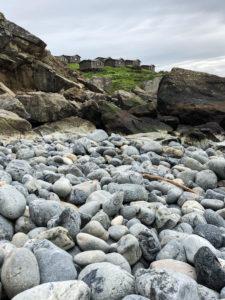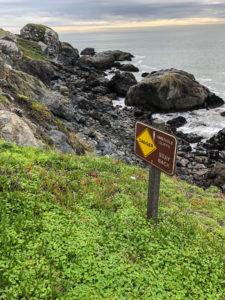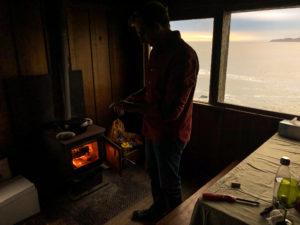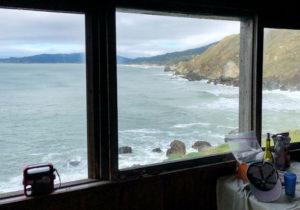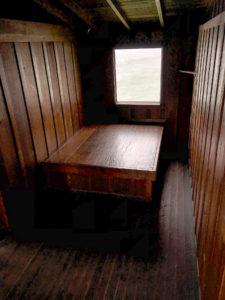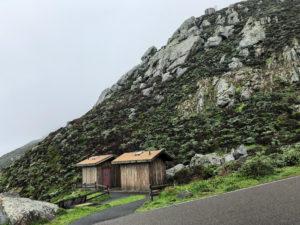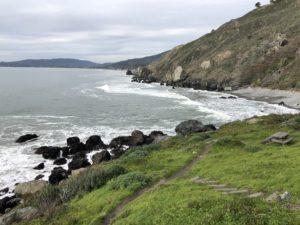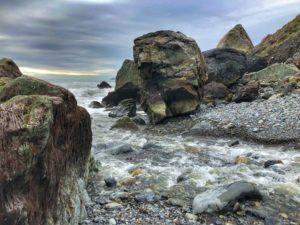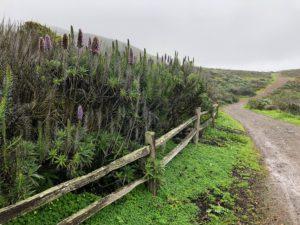
Are you getting soft? Is your life too cushy and comfortable? Do you long for the lifestyle that your forefathers worked their entire lives to escape? Do you miss the “good old days” when men were men, women were men, and electricity was just a pipe dream? Then let me tell you about Mount Tamalpais State Park in Marin County, California. More specifically, the Steep Ravine Cabins and Campground.
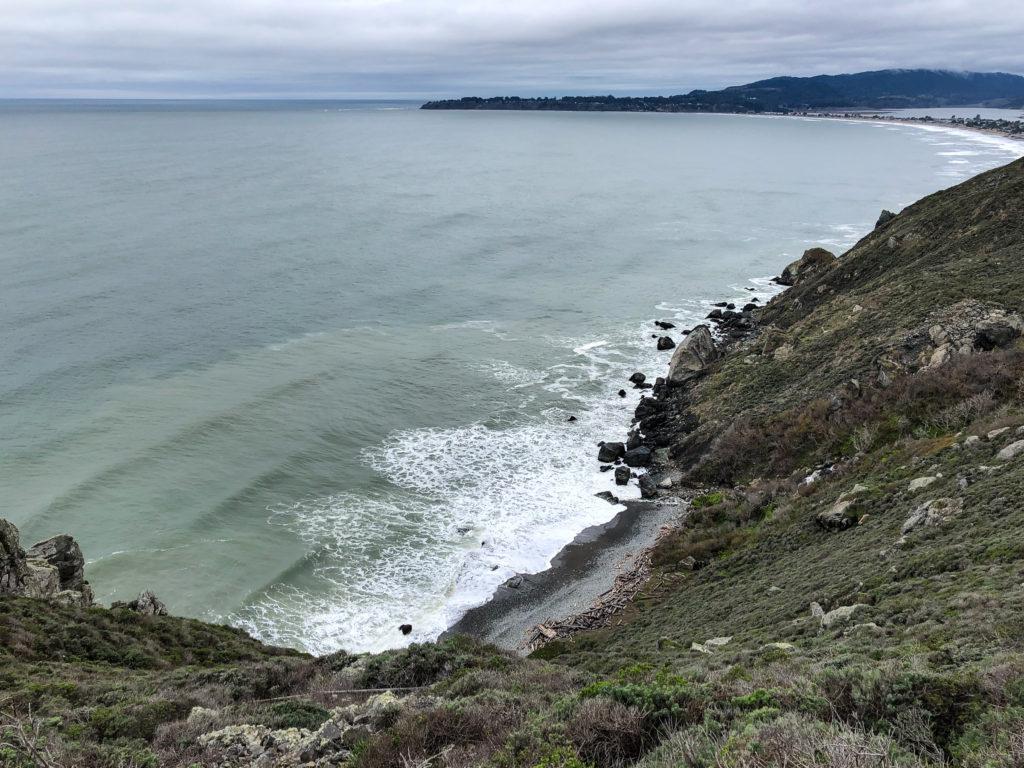
Steep Ravine really lives up to its adjective.
Located a bit south of Stinson Beach, the Steep Ravine property is a parcel of Marin County highland that angles mercilessly down into the bitterly cold and foreboding Pacific Ocean.
Halfway down, a few old wooden cabins perch atop massive granite boulders overlooking unobstructed vistas of silver skies and steel gray seas. These ancient abodes sit silently along the cliff's edge like sentinels surveying the coast for shipwreck survivors or cocaine drops from Mexican drug cartels.
Where the Marin highland finally succumbs to the ocean's relentlessly pounding waves, a small sand-less beach lays strewn with driftwood and worn-smooth rocks of every shape and size.
This jumble of rocks sit side-by-side with huge granite outcroppings and tell the beach's history of timeless and tumultuous tides—large boulders that got heaved ashore by powerful Pacific Ocean waves, while smaller ones that got ejected onto the beach like snot out of a whale's blowhole. I guess what I'm saying is that it's a shitty beach.
A short history of a steep ravine.
- In 1904, a man named William Kent bought the hundreds of acres known as Steep Ravine
- In 1930, his son, William Kent Jr., built thirteen rustic cabins for renters
- In 1945, the cabins were leased to family and friends for $450/year
- In 1960, the State of California bought Steep Ravine from the Kent Estate
- In 1974, leaseholders were evicted, cabins were remodeled, and opened to public
How did we get suckered into this living nightmare? In a word, treachery and hubris.
My wife and I are not campers by any definition of the word (unless that definition is: camp•ers n. 1. People who stay at hotels). Our idea of “roughing it” is tolerating DSL when we can't get FiOS, and given the choice between staying at a hotel and staying at—Hotel! We pick the hotel! It doesn't even matter what the other choice was.
A couple of months ago, while our blood sugar was apparently low, some “good friends” sent us photos of the Steep Ravine cabins and asked if we wanted to go with them in February. After a cursory glance at Yelp's 5-star rating of the place, we agreed. Yet at no point do I recall our friends saying, “Be forewarned, there's no heat, electricity, or toilet in the place” or, if they did, I chose not to hear it, casually dismissing the statement as if they'd informed me that the place was haunted. It was that overconfidence in the bourgeois comfort level inherent in all things NorCal—as well as our faith in the area's normally fair weather and near-constant sunshine—that led us down a winding path to our inevitable self-destruction, also known as “our home for the next two days.”
Pack for Steep Ravine like nobody cares whether you live or die.
Once we realized the personal hell that lay before us, we intended to pack every square inch of our car with every comfort of home. Our friends—who were equally apprehensive about their ability to survive a Northern California winter without central heating—helpfully made a spreadsheet entitled, “Steep Ravine Disaster Prep,” which listed sixty-nine normally unnecessary items we would need to bring.
The list included sleeping pads, curtains, garbage bags, firewood, tablecloth, and chairs, lanterns, military MREs, as well as iPhone chargers, extra batteries, Kindle/Netflix downloads, Cards Against Humanity, and, of course, scotch and wine—there was no way we were going to die of hypothermia while we were sober. In the end, we probably spent more time deciding what to bring—and how to fit it all in our cars—than we did actually staying in the cabin (which is why we're still alive to tell the tale).
Steep Ravine is actually part of Mount Tamalpais State Park.
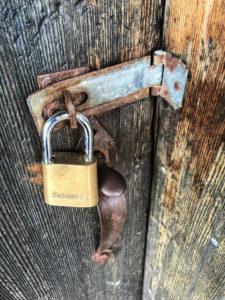
We drove up to the park, arriving at the appointed time, in about a half-hour from San Francisco. Being a government-owned and operated property, there was no grand entrance, no bellhops, and no parking valet—heck, there was barely even a sign.
Instead, there was only an unmanned metal gate across the entrance preventing the unauthorized ingress and egress of any motorized vehicles. The gate was secured by a fairly thick chain and a combination padlock. Once you entered the correct combination a few times, cursed a blue streak, and shook the crap out of the rusting padlock, it finally opened and fell away, allowing you to swing open and drive through the gate.
The drive down from the gate was about one-mile long over a twisting but recently paved, single-lane road. The trek proved to be no problem for either of our normal passenger cars, so don't think you need an SUV or Monster Truck to traverse it.
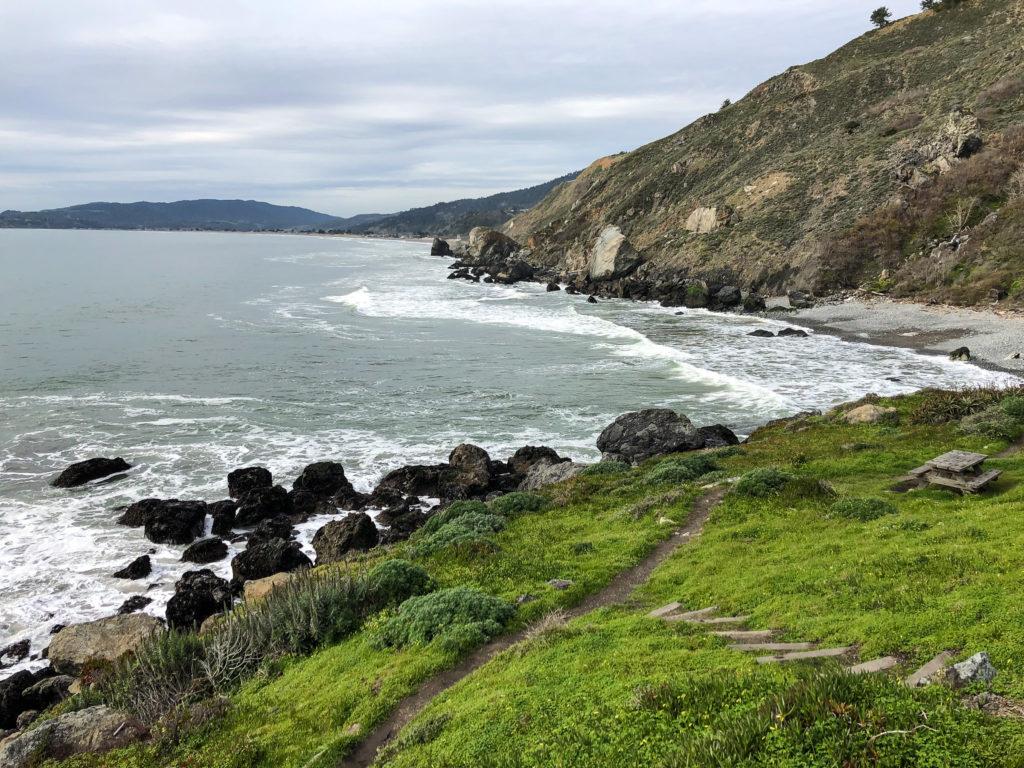
We parked our cars in the seemingly generous lot, but were informed that we could only keep one car there overnight and that the other had to be parked on the main road outside the gate. We spent the next few hours unpacking everything we'd need to survive this experience and, by nightfall, we had a good start unpacking the second car.
It's inconceivable that people used to live like this—voluntarily, no less.
Built in 1930, and probably renovated a few times since, Cabin #10 (aka, the “Whale Watcher”) was impressively sturdy and well-built. Its solid plank floors didn't creak, nor did its glass windows allow the howling wind to penetrate its air-tight seams.
Likewise, the deafening sound of the ocean surf crashing below us was impressively attenuated without any sound dampening or wall insulation. In fact, the cabin's single-layer, wooden walls prevented everything from coming inside—except the bone-chilling cold.
A comprehensive list of our Steep Ravine cabin's amenities.
- Walls (4)
- Roof (1)
- Wood stove (1)
- Cords of wood (1)
- Matches (24)
- Nitrogen/Oxygen mix (unlimited)
To prevent Early Onset Death, we'd purchased a few cords of wood from the campsite host for US$8 each and immediately set about making fire in the cabin's old-timey, wood-fired stove the way man has traditionally lit fires—with Duraflame fire starters.
The stove radiated an adequate amount of heat while the wood burned, but the blaze needed to be fed every couple of hours to avoid our lapsing into cryogenic stasis during the sub-50-degree Northern California night.
When the sun went down, things in Steep Ravine went from bad to even badder.
Fortunately, actual sleeping was never really a threat to us because our bare-bones cabin offered no actual bed. Instead, there was one queen-size—and two twin-size—plank platforms that the original architect seriously expected guests to sleep on without complaint (clearly, TripAdvisor reviews didn't exist back in the 1930s).
Our sleeping platforms were harder than the Birch and Swinnerton-Dyer Conjecture (a set of rational solutions widely recognized as one of the most challenging mathematical problems—and yes, I had to Google that joke).
We covered our “bed” with two very thick blankets and a sleeping bag, yet I still managed to bruise each hip badly just by simply lying on my sides. Even with a solid inch of padding, the platforms were no more comfortable or yielding than the hardwood floors themselves. Frankly, sacking out on the cold ground would likely have been softer and at least numbed the pain so we could sleep.
Doing our business on the night shift.
Not sleeping made going to the bathroom in the middle of the night easier, too. The bathrooms, though clean and well stocked with toilet paper, were in another building about 100 yards from our cabin, effectively a world away.
Making the midnight bathroom run in the pouring rain meant getting dressed for a military assault—including a raincoat, hiking boots, umbrella, and flashlight—followed by having to run an obstacle course of slippery mud, grass, and stones towards the spoils of victory: a freezing cold toilet seat.
How we killed time in Steep Ravine rather than each other.
The daytime proved slightly less horrible than the nights. One day, during the calm hours between periods of torrential rain, we hiked down to Stinson Beach, the nearest town, which was about 2.4 miles away.
Stinson Beach wasn't much to write home about because it was overcast, reminding us more of the sunless sand strips of Seattle or Maine than a real beach like Miami. (Apparently, we missed seeing a hot sulfur spring nearby, but I've since read that it has been entirely ruined by dirty hippies.) As the daylight drained from the darkening skies, we drank wine, played Cards Against Humanity, and talked at length about how we'd never do something this insane ever again.
Lessons learned from two days spent off the grid.
Though I may have made this trip seem like a horrible experience, it did teach me valuable life lessons. For one, I no longer take my home's utilities for granted. Heat, electricity, and indoor plumbing are the trifecta of modern civilization and I, for one, think we should have a national holiday to celebrate them. I mean, there's already a Toothache Day—and Utilities Day would be way better than that stupid holiday.
The experience also made me ask a lot of unanswerable questions. Like, why aren't school children taught about the guy who invented indoor plumbing, right alongside Thomas Edison or Benjamin Franklin? Personally, I'd much rather have an indoor toilet than electric lighting any day of the week.
And why is the inventor of the heated toilet seat not on Mt. Rushmore? Or the inventor of the indoor shower? Or central heating? But the one question our experience definitively answered was, “Why did someone invent hotels?” Because, this. Because of places like this.
If, after reading this report, you're still interested in going here, you can get reservations here.
Click here to see more of Peter Crosby's photography from his trip to the Steep Ravine Cabins in Marin County, California.

